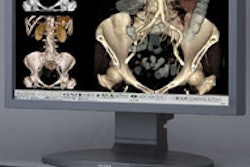ORLANDO, FL - If a vendor-client PACS relationship is analogous to a marriage between two partners, then the breakup of that relationship can be as devastating as a divorce. However, proper prenuptial PACS planning by a facility can ease the transition to a new IT partner, according to a presentation Saturday morning at the Society for Computer Applications in Radiology (SCAR) annual meeting.
"Understanding what might happen in a PACS divorce is important since it might be argued that the best way to go into a marriage is to thoroughly understand what would happen in a divorce," said Dr. Eliot Siegel.
Siegel, vice chairman of information systems in the department of radiology at the University of Maryland School of Medicine and chief of imaging at the Veterans Affairs Maryland Healthcare System in Baltimore, offered SCAR attendees his insights on economic strategies for a successful PACS divorce.
According to Siegel, a PACS is not a once-in-a-lifetime purchase. PACS buyers need to understand that the evolution of new technologies and functionalities means that the product generally has a five- to seven-year application life.
As such, planning for the next PACS within the contractual process of a current PACS implementation is prudent business strategy.
Siegel listed the top three reasons given for switching to a new PACS vendor:
- Dissatisfaction with support or service
- Lack of functionality
- Inability of the PACS to scale to facility's needs
One of the primary considerations in a PACS purchase for a radiology group is the issue of data migration. Siegel advised that a migration strategy should be clearly documented at the time of the initial implementation.
Siegel offered the following items for consideration in a data migration between a legacy system and a new system:
- Who does the data migration? Is it done cooperatively or without full partnership?
- Who does migration? Old PACS vendor, new PACS vendor, third party, or the facility itself?
- Who takes responsibility for the accuracy of this migration?
"Different vendors may have varying data fields that are idiosyncratic to them, such as technologists' comments, sticky notes, teaching file pointers, and tables of physicians and locations," he said.
Siegel noted that the cost of data migration is not inexpensive, and that it can be a time-consuming process during which the legacy PACS and the new PACS will be operational and need support. In addition, modalities and systems (such as a RIS) will have to be reintegrated to the new PACS, and users will need training and possible workflow adjustments to work effectively with the new system.
Mergers, acquisitions, and bankruptcy within the medical imaging industry are also an element that can be proactively dealt with as part of a purchase contract, Siegel said. For example, a PACS customer can insert a no-penalty opt-out clause to the contract enabling it to drop the vendor in these cases.
Although a move to a new PACS vendor is not without a price, Siegel said industry estimates of interval cost decreases between the first and second PACS range from 25% to 40%.
In addition, new pricing schemes and technology have opened the market to options that did not exist at the time when a PACS consisted of a hardware and software combination from a single vendor.
"People buying PACS for the second or third time seem to be more open to software-only solutions and to creative financing options such as fee-for-use or ASP (application service provider)-based offerings," he observed.
Siegel offered the following advice to radiology facilities considering switching to a new PACS, as well as those groups contemplating a first-time PACS purchase:
- Incorporate obsolescence protection into the PACS contract.
- Limit prepaid service contracts.
- If the facility has a strong IT group, consider a software-only PACS.
- Take advantage of colleagues' and other facilities' experiences with the technology.
- Factor in the time and cost of a data migration.
- Don't plan for a lifetime with the same PACS vendor.
By Jonathan S. Batchelor
AuntMinnie.com staff writer
June 5, 2005
Related Reading
Foresight aids PACS migration, June 4, 2005
Planning mitigates PACS data migration, March 21, 2005
PACS administrator role requires planning, vigilance, March 11, 2005
Preparation eases PACS' impact on technologists, March 1, 2005
ASP-powered PACS can slash costs, December 17, 2004
Copyright © 2005 AuntMinnie.com



















